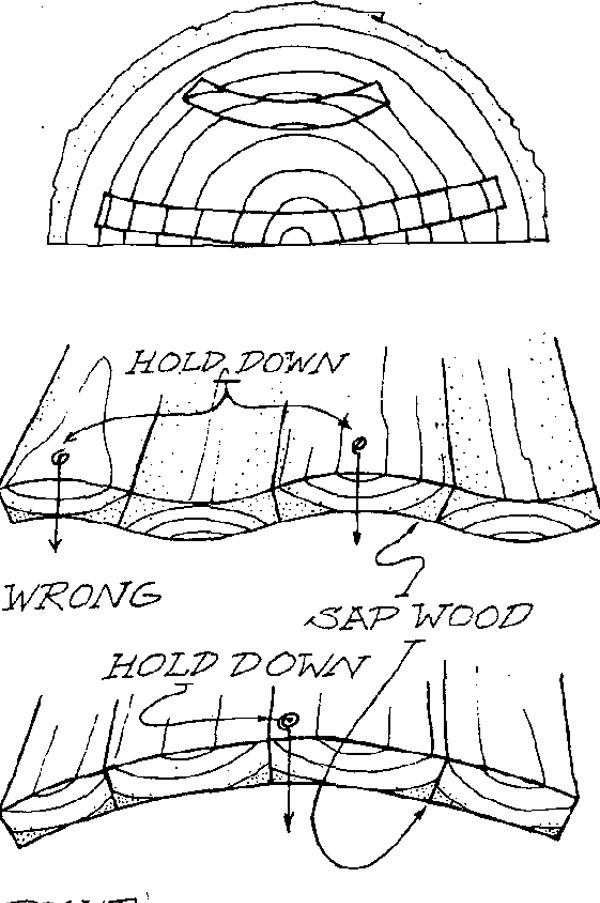
Synopsis: Tage Frid reviews several textbooks about wood and woodworking for beginners and finds that mistakes are very common. He seeks to correct a few here, first by discussing a few facts about the material itself. Then he focuses on errors the books advise, which he says suggest methods that are in some cases more difficult, more work, and sometimes create a time bomb that guarantees the wood will eventually split. Frid highlights drying and shrinkage, gluing and dowels, among many others. Drawings of right and wrong executions illustrate most points he makes.
Looking through several textbooks about wood and woodworking, I have found that, especially for the beginning craftsman, there is quite a bit of misguidance or, in my opinion, mistakes that are very common. It seems as though someone wrote a book once who forgot that wood always moves, and all those who followed continued with the same errors.
Before going any further, I think we should set down a few facts about the material we work with: how it reacts after it is cut, dried and made into wood products, and what happens to it after many years of use. I expect anything I design and make to be used for many years after I am gone, so I feel it is very important that whoever designs and makes furniture doesn’t make the mistakes that books advise. What they advise in some cases is more difficult, more work and sometimes creates a time bomb that guarantees the wood will eventually split.
I don’t think I have to explain about the birds and the bees. We all know that the seed gets into the ground and the sapling gets started and each year puts a new year ring on. A tree grows from the inside out, which means that the closer you get to the center, the older the wood. I don’t want to go into a big thesis about wood, just enough to show where the books are wrong. We know that the center of the tree is the oldest and the outside the youngest, which means the pores or cells on the outside are more open than the center ones, so the outside will shrink more than the inside. This tells how the wood moves after is is cut and dried.
The reason that this is important is that after the wood is dried and made into a piece of furniture, the wood will continue to expand and shrink every year with the seasons. How much it moves depends on how dry our houses get in winter, and how damp in summer.
Just as the new, outside wood shrinks more when it dries, so it expands more when the humidity rises. This means that when joining boards together — say, for a tabletop, or whatever — the boards should be chosen and placed such that new wood should be joined to new wood, old wood to old wood.
Otherwise, no matter how well you plane and sand the boards after joining them, the different rates of expansion and contraction will guarantee an uneven joint as soon as the humidity changes. Another thing most books tell you is to alternate the wood to compensate for the cupping caused by shrinkage.
From Fine Woodworking #2
For the full article, download the PDF below:
Fine Woodworking Recommended Products


Circle Guide

Stanley Powerlock 16-ft. tape measure





















Log in or create an account to post a comment.
Sign up Log in